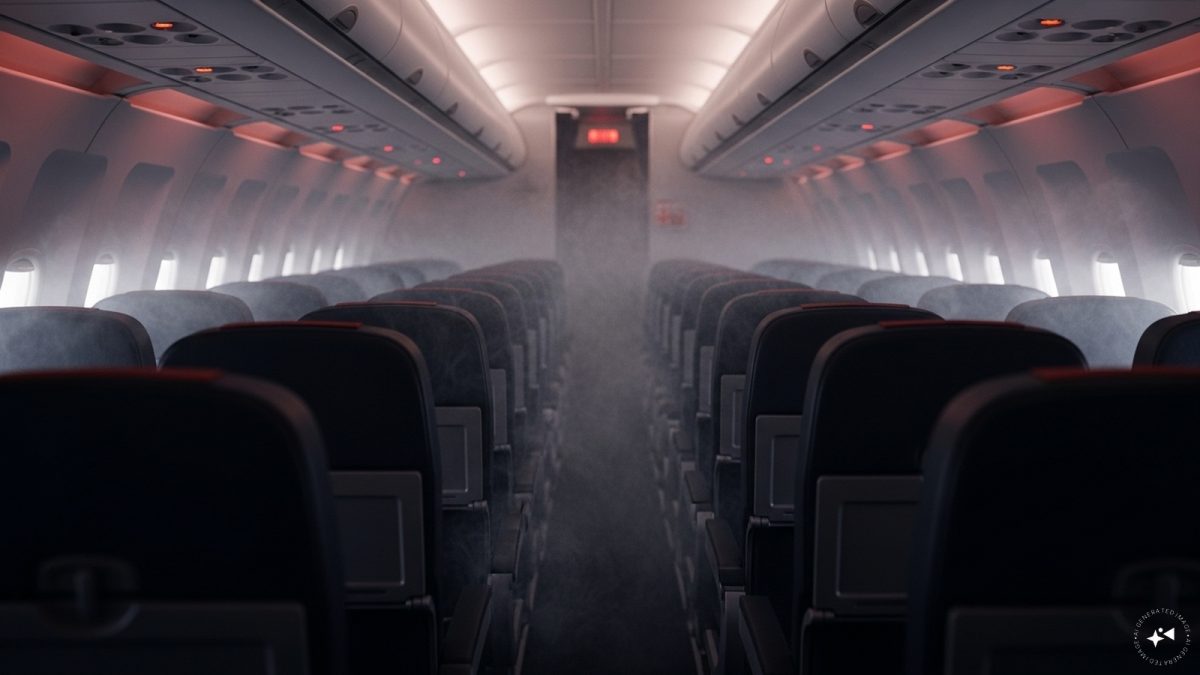Recent reports of “fume events” are casting a troubling shadow over air travel.
A recent Wall Street Journal investigation revealed that the problem stems from the “bleed air” system, which pressurises cabins by drawing air through engines.
When seals wear down, oil or hydraulic fluid can leak, sending harmful vapours into the cockpit and passenger area, leaving pilots, flight attendants and even passengers sick.
While regulators and aircraft makers say these cases are rare, the rising tally of reports suggests something is seriously wrong with how cabin air is managed.
Here’s what’s going on, and why the industry is under scrutiny
A sharp rise in reported fume events
The number of reported “fume events” has surged dramatically in recent years. According to The Wall Street Journal, which analysed more than a million FAA and Nasa records, incidents of toxic engine fumes leaking into cabins jumped from just 12 per million departures in 2014 to nearly 108 per million in 2024.
Airline documents suggest the real number could be far higher, closer to 800 per million flights. Since 2010, thousands of such events have been officially logged with the Federal Aviation Administration (FAA).
The trend is particularly stark on Airbus A320-family jets. In 2023, incident rates at major U.S. carriers were more than seven times higher than those on Boeing 737s. JetBlue and Spirit reported a 660 per cent increase since 2016.
That timeline coincides with the launch of the A320neo in 2016, when new-generation engines began facing seal-degradation issues, the investigation found.
Internal documents show that under pressure to keep planes flying, Airbus eased certain troubleshooting requirements. Airlines were allowed to defer deep cleaning or inspections after “transient” odours, provided certain conditions were met. But the documents also cautioned that half-measures could result in repeat incidents.
Editor’s Picks
How toxic fumes are making people sick
Most fume events involve visible smoke. Crews describe odours like sweaty socks, wet dog, or strong solvents drifting through the cabin.
While some episodes pass quickly, others have forced pilots to declare emergencies, divert flights, and order passengers to use oxygen masks.
The health effects can be severe. Passengers and crew often report sudden dizziness, nausea, and confusion. In more serious cases, the damage lingers for years.
On one Delta flight to South Carolina, thick white smoke poured from overhead vents, forcing the jet back to Atlanta. “Breathe through your clothing, stay low,” a flight attendant urged passengers over the loudspeaker as pilots declared an emergency.
🚨🇺🇸 TOXIC FUMES IN PLANES LEAVE CREWS WITH NFL-STYLE BRAIN DAMAGE
Pilots and flight attendants are reporting nerve and brain injuries “extraordinarily similar” to NFL concussions after inhaling toxic fumes leaking into cabins.
Airbus A320s are at the center of a surge in… https://t.co/SvmeXYF1gt pic.twitter.com/hpEziAShv5
— Mario Nawfal (@MarioNawfal) September 15, 2025
JetBlue flight attendant Florence Chesson told The Wall Street Journal she suffered a traumatic brain injury and permanent nerve damage after breathing contaminated air en route to Puerto Rico. She recalled feeling “drugged in midair,” watching a colleague collapse and vomit before both were rushed to the hospital after landing.
Her neurologist, Dr Robert Kaniecki, compared her condition to a chemical concussion, “extraordinarily similar” to the injuries football players suffer after brutal hits.
He said he has treated more than 100 flight attendants and about a dozen pilots with brain injuries tied to toxic cabin air. “This is real, this can’t be just all in their heads,” he told the newspaper.
JetBlue pilot Andrew Myers reportedly collapsed after inhaling fumes during a maintenance test and was later diagnosed with a “chemical-induced nervous system injury.”
He lost his FAA medical license in what became the first US case where a court recognised long-term health damage from a fume event. “There are pilots that we’re both aware of that should not be flying,” his wife Wendy said.
Regulators under scrutiny
The FAA also calls these events “rare.” Still, internal reviews have acknowledged the toxicity of bleed-air contaminants, even as official boards often recommend procedural fixes, such as crew training and checklists, over design changes.
In Congress, efforts to push tougher rules have repeatedly run into industry resistance. Proposals to require cabin air sensors, stronger filtration, or an eventual phase-out of bleed-air systems have been diluted over the years.
Now, a new bill aims to revive the issue. It would mandate filters on aircraft and begin phasing out bleed-air technology within seven years, a move that could finally reshape how cabin air is managed.
What are airplane manufacturers saying?
Both Airbus and Boeing insist that cabin air is safe. Boeing highlights that its 787 Dreamliner uses electrically driven compressors, which avoid pulling air directly from the engines, a design it says helps sidestep the problem altogether.
Airbus, meanwhile, has promoted its “Project Fresh” redesign, telling customers last year that moving a cabin vent could cut odour events by as much as 85 per cent. But the fix won’t be available until 2026, and only for new aircraft.
A Boeing spokesperson told The New York Post, “Safety is our top priority.” The company said it has a long track record of working with researchers, universities, industry groups and regulators to study cabin air quality and improve standards.
“The cabin air inside Boeing airplanes is safe. There is no indoor environment that is free from ‘contaminants,’” the spokesperson said. “Independent researchers, universities, industry groups, and government agencies have conducted extensive research on cabin air quality. The results repeatedly demonstrate that contaminant levels on aircraft are generally low and that health and safety standards are met.”
Airbus, for its part, maintains that its planes meet all airworthiness requirements.
With input from agencies
End of Article

)

